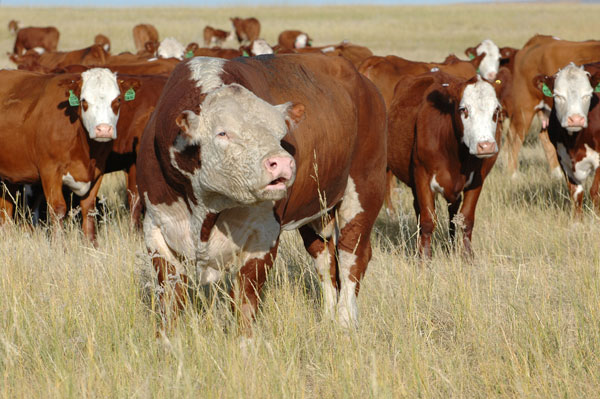EVERY bull should get a BSE before EVERY breeding season.
May 7, 2019

Talk to any veterinarian who does a significant amount of beef work, and he or she will have stories of a group of cows that went “0 for” at pregnancy check.
Maybe it was a group of heifers with the yearling bull that had zero out of 12 bred, or a group of 30 cows with a mature bull that “got them all pregnant each of the past three years.”
My first case was just six months into practice, when I went to sleeve a group of 25 cows that spent almost three months with a rented bull.
When the first cow that walks into the chute is open, it causes a little angst. When it is the first four, we start thinking, “Oh, no.”
We checked all 25 just to be sure — and the owner told me a few years later that he wondered at the time if this new veterinarian knew what he was doing — and all were open. The owner was upset, and I felt terrible.
What could have prevented this and nearly every other “0 for” disaster? A breeding soundness examination (BSE) of the bull ahead of the breeding season.
Every bull should have a BSE before every breeding season. In some areas of the country, it is common to have spring and fall calving seasons.
One of my former students knew I loved real-life examples to use for teaching purposes and told me about one of his clients.
The producer has a spring and a fall calving season and always did a BSE on his bull each spring — but skipped it in the fall.
He used timed AI and then turned in the bull for 65 days in both breeding seasons.
At fall preg check, the spring calvers were 95% pregnant as usual. The following spring preg-check of the fall calvers revealed 55% pregnant, and all appeared to be bred to the AI date. A BSE the following day on the cleanup bull revealed zero sperm.
In both of the cases above, the owner could have paid for BSEs in their bulls for the next 50 years and still been money ahead by investing in the BSE.
If your herd health veterinarian is a member of the American Association of Bovine Practitioners (AABP), he or she can download a spreadsheet to examine the cost-effectiveness of a BSE for your specific herd.
I ran the numbers for a typical herd in my area:
Bull purchase price = $5,000; bull useful life = five years; bull averaged 25 cows per season; BSE cost = $75 (includes owner labor and DVM cost); average weaning weight, 525 pounds; calf price = $150 per cwt; 93% calf crop.
Approximately 10% of all bulls that undergo a BSE fail the examination, so in the example above we look at the impact of moving from a 93% calf crop to an 83% calf crop.
This would be what could happen in a large herd that has 10 bulls with 250 cows, and one of the bulls was infertile and got zero cows pregnant.
In the example above, the return on investment is 25:1. That means that for every dollar you invested in the BSE, you received around $25 in return.
To use an investing analogy, it’s like buying an acre of land for $5,000 and selling it for $125,000 the following year!
Remember, EVERY bull gets a BSE before EVERY breeding season.
About the Author(s)
You May Also Like





